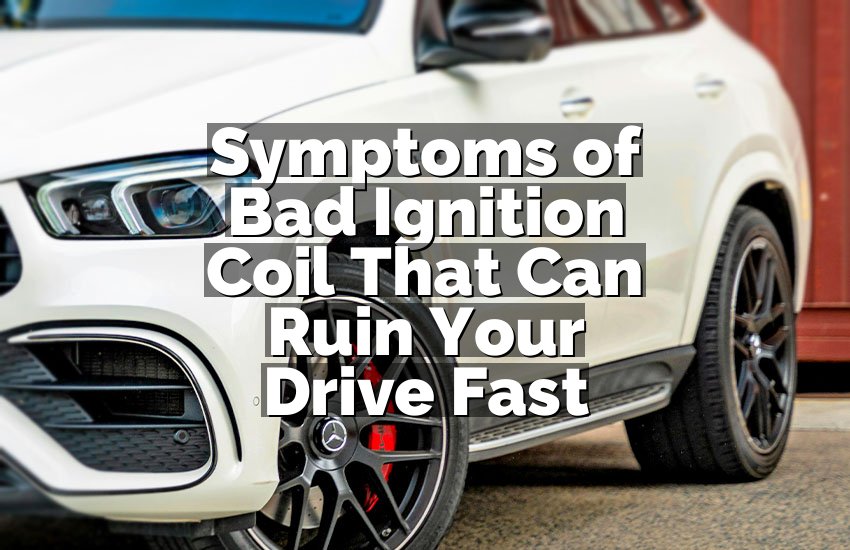Have you ever wondered which car seat is right for your child as they grow? It can feel tricky because there are so many options! But don’t worry—choosing the right car seat is easier than you think. Just like picking clothes that fit just right, car seats change as your child grows. Let’s talk about the best types of car seats for different ages so you and your little one can stay safe and comfy on every ride.
Infant Car Seats: Keeping Newborns Safe and Snug
When your baby is born, their first car seat needs to be very safe and cozy. Infant car seats are made just for tiny babies. These seats usually face backward because this position protects a baby’s head and neck best during a trip in the car.
Choosing the Right Infant Car Seat
Picking an infant car seat can feel confusing, but focusing on safety and comfort helps. Look for seats that meet safety rules set by your country. It’s important to find a seat with a good harness system that holds your baby snugly. Also, check that the seat fits well in your car—some seats are easier to install than others. Remember, ease of use matters because you will take the seat in and out often.
How to Install and Use an Infant Car Seat
Installing an infant car seat might seem tricky, but following simple steps makes it easier. First, place the seat facing the back of your car. This way, it will protect your baby’s head and spine. Use the car’s seat belt or the LATCH system (a special set of hooks) to keep the seat tightly in place. The seat should not move more than one inch side to side. Always read the instruction manual carefully and double-check your work every time you install the seat.
Cleaning and Maintaining Infant Car Seats
Babies can be messy, so cleaning the car seat is important. Start by removing the cover, if the manufacturer says it’s okay. Most covers can be washed by hand or in a washing machine on gentle settings. Wipe the plastic parts with a damp cloth and mild soap. Avoid using strong chemicals that could harm your baby’s skin. Make sure everything is dry before putting the seat back together. Regular cleaning keeps the seat fresh and safe for your little one.
When to Move on from an Infant Car Seat
Infant car seats usually work until your baby is about 1 year old or weighs 22 to 35 pounds, depending on the seat’s rules. It’s time to switch when your baby’s head is above the top of the seat or if they reach the weight limit. After this, you will need a bigger seat to keep your child safe.
Convertible Car Seats: For Toddlers and Growing Kids
Once your child outgrows the infant seat, convertible car seats are the next step. These seats grow with your child and can change from facing backward to forward. Convertible car seats are strong and comfy for toddlers and preschoolers.
Why Choose a Convertible Car Seat?
Convertible car seats are a good choice because they last for many years. You don’t have to buy new seats often, which saves money and effort. These seats offer better support for a bigger child’s head, neck, and body. They usually have higher weight and height limits than infant seats. Plus, you can keep your child rear-facing longer, which is safer for young children.
How to Switch Your Child to a Convertible Car Seat
To change your child to a convertible seat, make sure they still fit safely rear-facing if possible. Experts say kids should stay rear-facing until at least 2 years old. When your child is ready, you can switch the seat to face forward. This usually happens when your child is over 2 years old or has outgrown the rear-facing weight limit of the seat. Make sure the harness fits well and the seat is installed tightly in your car.
Cleaning and Fixing Convertible Car Seats
Cleaning convertible seats is a bit like cleaning infant seats but sometimes more work because of their size. Remove the seat covers following the instructions and wash them gently. Check all the straps and buckles for dirt or damage. If you notice any broken parts or loose straps, don’t use the seat until you fix or replace them. Sometimes, you can buy replacement parts from the seat maker or a store. Keeping the seat clean and in good shape helps keep your child safe.
How Long Can Your Child Use a Convertible Car Seat?
Convertible seats can usually be used until your child weighs about 40 to 65 pounds or reaches a height limit set by the seat maker. After that, your child might need a booster seat, which helps them sit higher in the car for safety.
Booster Seats: Helping Big Kids Stay Safe and Comfy
When your child grows bigger, a booster seat helps them use the car’s seat belt correctly. Booster seats raise your child so the seat belt fits across the strong parts of their body, like the chest and hips, not the stomach or neck.
When to Start Using a Booster Seat
Most kids start using a booster seat around age 4 to 7, or when they outgrow their convertible seat’s limits. It is important your child can sit properly in the booster seat, with their back straight against the car seat and their feet on the floor. The seat belt should cross the middle of the chest and rest low on the hips. If the belt doesn’t fit right, it is not safe, so keep using the booster seat.
Different Types of Booster Seats
There are two main types of booster seats: high-back and backless. High-back boosters have a headrest and side protection, good for cars without headrests or for kids who need extra support. Backless boosters are smaller and easier to carry, good for cars with headrests or when kids can sit up well on their own. Choose the one that fits your child and car best.
Cleaning Booster Seats
Booster seats are usually simpler to clean than infant or convertible seats. Most covers can be taken off and washed. Wipe the plastic parts with a damp cloth and mild soap. Check the belt guides and clips to make sure they are clean and work well. Regular cleaning helps keep the booster seat in good condition and safe.
How Long Should a Child Use a Booster Seat?
Children should use booster seats until they are tall enough to fit the car’s seat belt without help. This usually means about 4 feet 9 inches tall and between 8 and 12 years old. Never rush to stop using a booster seat because the seat belt might not fit safely otherwise.
Seat Belts for Big Kids: The Final Step to Car Safety
Once your child is big enough, they can use the regular seat belt in the car. But it’s very important they know how to wear the belt correctly every time to stay safe.
When to Move from a Booster Seat to a Seat Belt
Your child can move from a booster seat to a regular seat belt when the seat belt fits them right. The lap belt should sit low on the hips, and the shoulder belt should cross the chest and shoulder—not the neck or face. Your child must be able to sit all the way back in the seat with knees bent at the edge of the seat. If they can’t, they should keep using a booster.
Teaching Kids How to Wear Seat Belts Properly
Kids sometimes don’t like seat belts because they feel uncomfortable. Teach your child why seat belts are important and how to wear them correctly every time. Show them how to avoid putting the shoulder belt under their arm or behind their back. Make wearing a seat belt a rule in your car, no matter how short the trip.
Cleaning and Maintaining Seat Belts
Cleaning seat belts helps keep them working well. Wipe belts with a damp cloth and mild soap. Don’t use bleach or harsh chemicals that can weaken the fabric. Check the belt for frays or damage regularly. If the seat belt doesn’t work properly or is damaged, have it fixed by a professional before using it again.
Safety Tips for Big Kids Using Seat Belts
Always make sure your child uses the seat belt every time they ride in the car. Avoid letting them lean over or slouch in the seat. Keep doors locked and windows safe to prevent distractions. Regularly remind your child about car safety, so it becomes a habit for life.
I hope this guide helps you feel confident choosing the right car seat for your child at every age. Safety and comfort go hand in hand, and now you have the simple steps to keep your little one protected on every trip.
Frequently Asked Questions (FAQs)
Is it safe to use a secondhand car seat?
Using a secondhand car seat can be safe, but only if you know its full history. It’s important to check if the seat has never been in a crash, has all its parts, and hasn’t expired. Car seats have expiration dates because materials wear out over time. Always get the manual and inspect the seat carefully. If you’re unsure, it’s better to buy a new seat to make sure your child stays safe.
Can I use an infant car seat after one year?
Most infant car seats have weight and height limits, often around 22 to 35 pounds or about 1 year old. After your baby grows past these limits, it’s time to switch to a convertible seat. Staying in the infant seat too long can be unsafe because the seat might not support your child properly anymore.
Do I need to use a booster seat if my child is tall?
Height is one of the most important factors for booster seats. Even if your child is tall for their age, they should use a booster until the car’s seat belt fits them correctly. This means the lap belt sits low on their hips, and the shoulder belt crosses the chest. If the belt does not fit right, use a booster seat.
Is it better to keep a child rear-facing as long as possible?
Yes! Keeping your child rear-facing as long as possible is the safest choice. Rear-facing seats protect the head, neck, and spine better in a crash. Experts recommend keeping kids rear-facing until at least 2 years old or until they reach the seat’s maximum weight or height limits.
Can I switch from a convertible seat to a booster early?
It’s best not to switch to a booster seat too early. Your child should stay in a convertible seat until they reach the weight or height limits. Convertible seats provide more protection with a harness, which is safer than a booster for smaller kids.
Do I need to buy different car seats for different cars?
You don’t always need different car seats for each car, but sometimes seats fit better in some cars than others. If you use multiple cars often, you can buy two seats or move one seat between cars carefully. Make sure to install each seat correctly every time you move it.
Is it okay if my child leans forward in their car seat?
No, leaning forward reduces the safety of the car seat. The harness or seat belt needs to fit snugly against the child’s body. If your child leans forward, the seat might not protect them well in a crash. Encourage your child to sit back fully and comfortably in the seat.
Can car seats expire, and why?
Yes, car seats do expire. The materials can wear out, and safety technology changes over time. Using an expired car seat might not protect your child well in a crash. Always check the seat’s expiration date, usually found on a label, and replace it if it’s expired.


